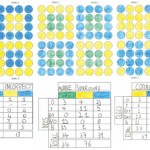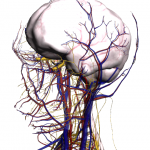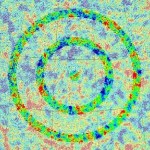education
A recent article in Science, "Computational Physics in Film" reminded me how far we have advanced in computer simulation - all based upon basic physics of fluid dynamics.
Exoticmatter NAIAD City flood from Igor Zanic on Vimeo.
A spectacular example blending fluid dynamics and art: "Naiad City Flood":
Some of the most spectacular examples of physics in film involve fluids, where non-linearities in the underlying Navier-Stokes equations that describe fluid motion lead to accumulation of remarkable geometric complexity.
Computer-based algorithms for animation offers more than speed,…
Protecting and sustaining our environment is a core value that seems to be common sense. It never occurred to me that this value might somehow conflict with religion - after all, isn't being a good steward of the earth a goal of numerous faiths? Apparently not.
As reported in The New York Times, there is a strong push back by Christian evangelists against environmentalism. I find this mind boggling.
This movement refers to itself as "Resisting the Green Dragon" {is such a moniker supposed to conjure images of fire breathing dragons in a prehistoric era?} and refers to enviornmentalism as…
Hans Rosling's Joy of Stats is now available in its entirety (one hour) from YouTube! Thanks to flowingdata for the heads up.
Walt Disney Pictures
Did I not say that science can be beautiful?
Consider Disney's latest animated film, "Tangled." How does one simulate human hair, taking into account sheen and reflection of light, not to mention bending? In the earlier days of animation, these drawings were done by hand by masters of the craft. Now, the images can be generated by computer algorithms. The answer is beautiful mathematics, thanks to mathematicians at Columbia University and the Free University of Berlin.
As reported in The New York Times
Beautiful math:
What he and others mean when they refer to work…
I have been exploring our "Brain's Atlas" introduced in my recent post and discovered an extraordinary resource: the Relationship Viewer. A snapshot is shown to the right, appearing as a spiraling multi-colored pin wheel.
This interactive viewer developed by the research group of Dr. Arthur W. Toga at the David Geffen UCLA School of Medicine Laboratory of Neuro Imaging (LONI) invites the user to explore:
Relationships in 2D brain, 3D brain and circular lines
As you explore the connections, the color scheme is:
Warmer colors mean stronger connections and cooler colors mean weaker…
This week, two press releases from the Institute:
The first was on the sequencing of the woodland strawberry genome (unfortunately, in the same week the cacao genome was sequenced). The Institute scientists who participated in the project contributed in the computational analysis of genes encoding flavor- and aroma-related proteins.
This wild cousin of the cultivated strawberry is a member of the rose family, along with fruit trees including apples, peaches, cherries and almonds. In other words, this small annual plant is sure to become a useful experimental model for plant and agricultural…
Via iO9, a Nature News slideshow of natural history engravings by physician Martin Lister's teenage daughters, who contributed technically accurate engravings of shells to one of his books, the Historiae Conchyliorum:
Historians now believe the pair were the first women to use microscopes to help produce some of their scientific drawings. Anna and Susanna's place in the history of science is explored in a biography of Martin Lister in preparation by historian Anna Marie Roos of the University of Oxford's Cultures of Knowledge project. In a recent web post, Roos describes how she stumbled…
Because people have been discussing Google ngrams a lot, and because there are always major caveats to new datamining methodologies, I have to link Natalie Binder's excellent series of posts urging caution, not only about the methodology, but about assuming too much about ngrams' utility in social research.
Binder says,
The value of the Ngrams Viewer rests on a bold conceit: that the number of times a word is used at certain periods of time has some kind of relationship to the culture of the time. For example, the fact that the word "slavery" peaks around 1860 suggests that people in 1860…
If you are fascinated with word usage, I suggest you try a powerful new tool, Google NGram Viewer. According to the website:
What's all this do?
When you enter phrases into the Google Books Ngram Viewer, it displays a graph showing how those phrases have occurred in a corpus of books (e.g., "British English", "English Fiction", "French") over the selected years. Let's look at a sample graph:
You may have noticed the term "schadenfreude" appearing more and more, defined as the pleasure derived from the misfortunes of others. Its usage is, I believe, a telling by product of the explosion of…
National Museum of Health & Medicine has an amazing flickrstream of vintage medical photographs and other ephemera. Lately they've been adding diagnostic/documentary photos of Civil War soldiers, as well as some military propaganda posters (anti-VD and anti-food waste, of all things). This series of photos of a lab setup for measuring cranial capacity are my favorites. Check out the handled basket of skulls! And they're using an "insufflator!" I did not even know that was a word.
Happy holidays to our friends at Bottled Monsters and thanks for all the wonderful photos!
"We also discovered that science is cool and fun because you get to do stuff that no one has ever done before."
With my academic training and years of reflecting on how to teach science, I don't think I could develop a more compelling statement than this, written by a group of elementary school students.
As graduate students in science, we struggle mightily to get a paper published in a top journal. This story reported by Ed Yong in Discover magazine reminds us that pure science, the process of discovery, can be accomplished by young children. Some would argue that you need to be a…
Continuing our series of science-themed Christmas tree ornaments, we have this cute pair of reading bears:
"But wait," you say, "reading isn't a science!" Ah, but while reading itself may not be a science, science is nothing without the scientific literature. The really essential step in the process of science is the communication of scientific results to others. That's what allows future scientists to "stand on the shoulders of giants," to borrow a phrase from Newton, using past results as the basis for future experiments. Reading the results of others is absolutely essential to science.…
Education 'reformers' constantly talk about how schools need to be run more like businesses. Now, like Comrade PhysioProf, I do think good management is important. But what does good management have to do with business? So asks David Carr (italics mine):
On Wall Street and on Silicon Valley office campuses, in hedge fund boardrooms and at year-end Christmas parties, it seems you can't have a conversation without someone talking about the movie that finally lays bare America's public education crisis.
"Waiting for 'Superman' " is one thing that Bill Gates, Steve Jobs and Mark Zuckerberg…
Inspired by my earlier posting on the fruit fly brain:
I received a nice "holiday gift" from a researcher at the National Center for High-Performance Computing (NCHC) in Taiwan, Terry C.-W. Yeh. NCHC and the Brain Research Center at the National Tsing Hua University created the FlyCircuit database.
This 32 second video gives you a 3D tour of the various components of the fruit fly brain integrating data collected using more than 16,000 individual neurons - a startling example, to me, of the wonderment of science as a product of bridging computer science, molecular biology and neuroscience…
Know anything about quantum computing (other than it sounds awesome)? Well, I didn't, until I read the latest edition of the Harvard Science in the News Flash.
Thus far, utilizing charged electrons to make computers has been endlessly fruitful, allowing us to build smaller and faster computer chips. Unfortunately, we cannot continue improving technology simply by scaling down to smaller sizes because we will eventually reach atomic sizes where our devices will no longer function. As we look ahead into the not-too-distant future, we will need to explore new, innovative technologies that go…
My recent posting, The Fruit Fly Brain Atlas Emerges generated quite a bit of interest from readers, perhaps because most of us are visual learners, including myself. One reader's comment reminded me how fun it was to explore the FlyCircuit database. It's easy to register; once you're in, you can not only browse the more than 16,000 neurons (I know...) but you can view 3D movies. I invite readers to send me via email your favorite image or movie, and why, and I'll post a future article compiling them. I think this will be fun!
From time to time, my office receives publisher's copies of books, uninvited and not upon my request. Today, a copy of Jay Hosler's "Evolution: The Story of LIfe on Earth" arrived. {The hubris of explaining the "story of life on earth" is unimaginable to me, but that's another story.} This piques my interest; is a careful review warranted, or should it be added to my "to do" list that increases with each semester? I fully recognize that this is a "hot button" issue, and I don't want to enter the debate per se. I am simply a curious scientist.
According to Amazon:
Product Description…
Google Labs just released a new "experiment" - Body Browser. You have to upgrade to Google Chrome beta if you don't already have it, but when you do, you can play with a 3-D, rotatable reconstruction of a (female) human body. Sliders let you fade the circulatory, skeletal, muscular, and nervous systems in and out over the body organs; you can toggle labels on and off, and you can zoom, spin, and rotate in a way that would only be cooler if it were on a touchscreen iPad. (Yeah, that's what I said, Google. Do it!) Check out this screenshot:
Toggle a few sliders and you can wrap the vessels and…
For those that haven't heard about the NASA/arsenic bacteria story that's been exploding all over the science blogosphere over the last couple of weeks, I like the summary over at Jonathan Eisen's Tree of Life blog:
NASA announced a major press conference
at the conference they discussed a new Science paper claiming to show the discovery of a microbe that could replace much/some of its phosphate with arsenic
initial press coverage of the paper was very positive and discussed the work as having profound implications for understanding of life in the universe - though some scientists in some of…
"The most important scientific revolutions all include, as their only common feature, the dethronement of human arrogance from one pedestal after another of previous convictions about our centrality in the cosmos." -Stephen Jay Gould
Tuesday, I talked about an alternative theory to cosmic inflation.
Whereas cosmic inflation gives you a uniform, flat Universe, that's the same temperature everywhere, with a predictable spectrum of fluctuations, the alternative model gave none of those things, but did give those regions of concentric rings with low fluctuation amplitude.
In detail, of course,…







